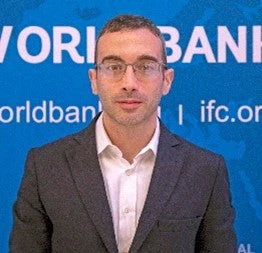 A Yemeni child studies in a school destroyed by the war in the city of Taiz, Yemen
A Yemeni child studies in a school destroyed by the war in the city of Taiz, Yemen
Two significant World Bank reports about Yemen have been published - the Country Economic Memorandum (CEM), and Surviving in the Times of War (STW). As prospects for a permanent ceasefire or even a peace deal in Yemen look more favorable than ever since the conflict began in late-2014, our reports provide policies and recommendations for taking Yemen’s economic growth forward.
Many years of violence and conflict had plunged the already poor country into an ongoing food emergency verging on famine. Yemenis have not just been affected by open warfare but by economic warfare. Both of the abovementioned World Bank reports analyze the consequences of this economic war, highlighting the strong linkages between the macroeconomic shocks experienced since 2014 and the microeconomic setbacks to households struggling to put food on the table. In particular, both reports consider the currency crisis, one of the key economic shocks faced by Yemenis
Of all the economic challenges posed by the conflict, diverging monetary policies between the two parties, foreign-exchange flows, and monetization of fiscal deficits are among the most consequential. In 2016, the Internationally Recognized Government (IRG) moved the Central Bank of Yemen (CBY) headquarters to Aden, representing, in effect, a new institution. While the CBY retained access to markets and monetary instruments, it has lacked adequate foreign-exchange liquidity.
Meanwhile, Houthi-controlled Sanaa remained Yemen’s banking and trading center, benefiting from greater remittance inflows and foreign aid executed through the formal banking system. The Yemeni rial briefly stabilized in early 2019 following Saudi Arabia’s large deposit of hard currency at the CBY-Aden. As this deposit was gradually depleted, the Houthis announced that Sanaa would no longer accept the new IRG-printed banknotes, effectively severing monetary policy between the two areas.
Faced with mounting financial pressures, exacerbated by the collapse of oil production and exports in 2015 (and the related loss of foreign exchange), the Internationally Recognized Government resorted to monetary financing of the fiscal deficit. This quickly depleted hard-currency reserves, prompting the CBY to abandon the de facto dollar reference, instigating macroeconomic deterioration amid rapid inflation and currency depreciation. As the conflict progressed, Yemen’s economy has increasingly developed into a de facto dual economy with IRG and Houthi-controlled areas effectively having separate national systems, as the differences in exchange rates between the two areas demonstrates. Following the currency split, the rial continued to depreciate in IRG-controlled regions, as the selected time window in Figure 2 shows.

These macro-economic conditions have had disastrous microeconomic repercussions. While the average cost of basic food items has increased substantially in every district since 2015, the different monetary policies have caused economic differences, such as price divergence, between IRG and Houthi-controlled territories (Figure 3).

As described in Surviving in the Times of War, we do not have reliable representative poverty data for Yemen. However, evidence points to the devastating effects the currency crisis and rising food prices have wreaked on Yemeni households, particularly on those already on the cusp of food insecurity. High-frequency phone surveys found that the share of Yemeni households with poor or borderline food consumption scores (FCS) and the share with a low or medium reduced coping strategy index (rCSI) increased by 11 and 10 percentage points, respectively, between July and October of 2018—the month when the (IRG) rial was at its lowest value. Additionally, the share of households with a poor or borderline FCS and a low or medium rCSI increased 7 percentage points each between March 2020 and February 2021. An estimated 3 million Yemenis suffered poor food access in 2018 and 2 million in 2021.

As peace efforts advance, maintaining macroeconomic stabilization and, specifically, monetary coordination should be a high priority, as it will play an important role in addressing food insecurity for the most vulnerable Yemenis. The upcoming reports deepen our understanding of the experiences of everyday people across Yemen, and it will be important to keep monitoring macroeconomic and microeconomic dynamics—and the linkages between them—to support policy reforms for inclusive growth and poverty reduction.



Join the Conversation